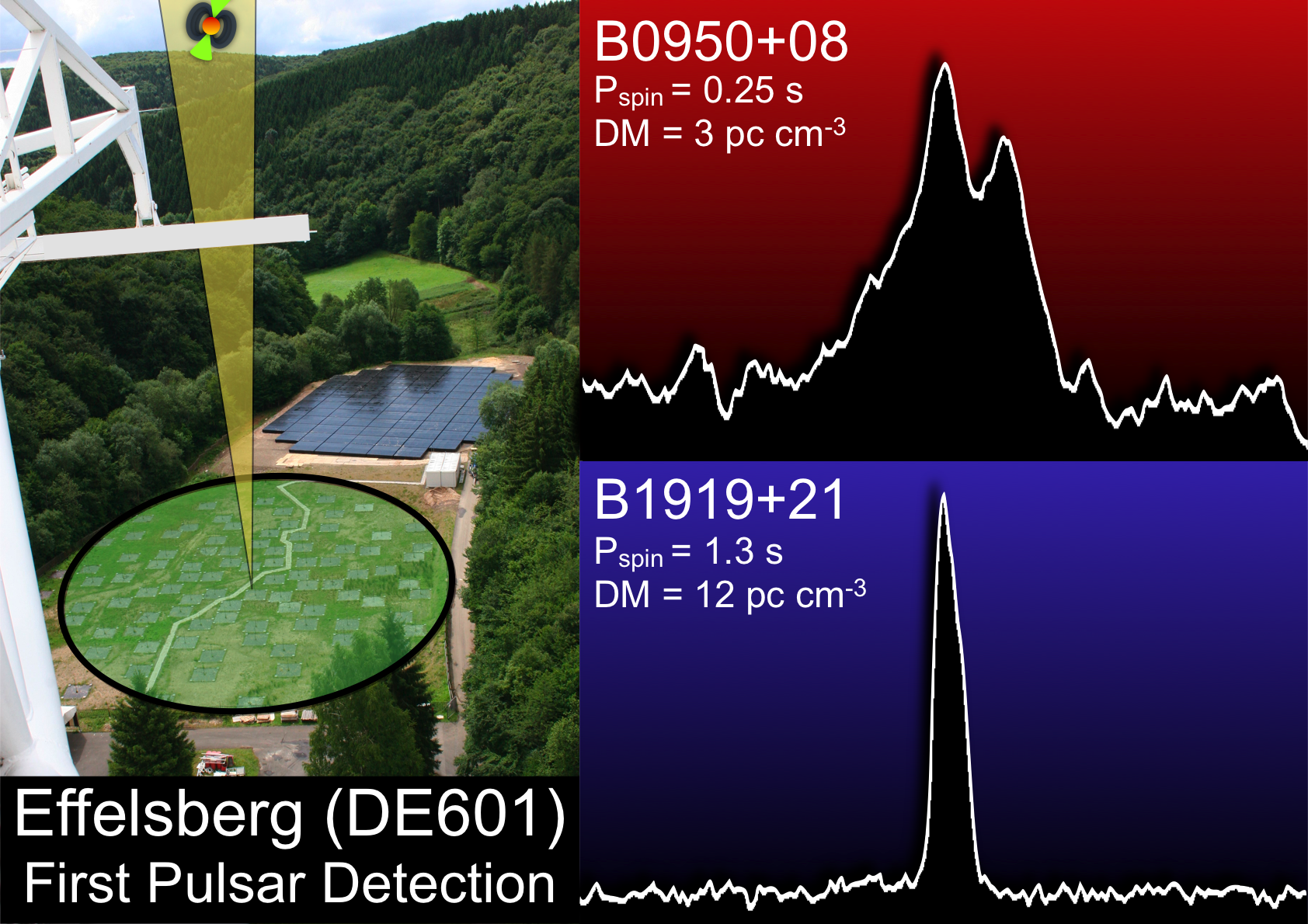| Description: | The Effelsberg LOFAR station has made its first successful remote-astronomical observations, detecting two pulsars on August 19th, 2009. Data were streamed to the BG/P supercomputer in Groningen for the bulk of the required processing, and then further processed offline. The pulsars were detected using the 96 low-band antennas of Effelsberg, in the frequency range 60-70MHz. The low-band antennas of LOFAR are bringing us back to the roots of pulsar science, which was born at these low observing frequencies (see also Daily Image from 21-08-2009).
Effelsberg is the first international LOFAR station, and the ability to do remote astronomical observations with this station is a major step forward for the LOFAR project. The observations here were only possible because of the enormous amount of work that has gone into preparing the station itself and establishing a reliable, high speed internet connection between Effelsberg and Groningen. Being able to combine/correlate Effelsberg with the Dutch LOFAR stations is clearly a very important aspect of the project, but single station use is also of great scientific interest - as is clearly visible from these observations. For this reason, the ability to record data locally at the station is also being developed, so that optimal use of the station can be made when it is not needed as part of the greater LOFAR array.
|

